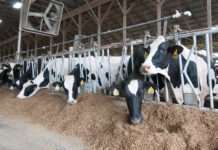The most common question I’ve been asked over the years is when and how to terminate an oral lease to make it legal. That’s pretty cut and dried because it’s spelled out in Kansas statute.
For all leases, except written leases signed by the parties that provide otherwise, Kansas law says that notice to terminate farm and pastureland leases must be given:
- in writing
- at least 30 days prior to March 1, and
- must fix March 1 as the termination date of the tenancy.
As I recently sat in on a training session on Kansas Ag Lease law, I learned something new, though. Under an old interpretation of the law, in the event the landowner gave proper termination notice and the tenant, prior to receiving the notice, tilled, applied or furnished fertilizers, herbicides, or pest control substances and had not planted the ground, the landlord was required to pay the tenant for the fair and reasonable value of the services furnished. Under a more recent interpretation of the law, the tenant could continue with tillage and planting and keep the land until after harvest or August 1, whichever came first. The ag law specialist from Iowa called this the “Race to the Tractor”. If the tenant stated field operation first, they were entitled to another year on the land. If the landowner served termination first, the lease expired on March 1 of the next year. You need to keep this in mind when considering changes to your farm leases. It might be another good reason to consider a written lease with termination dates spelled out on paper.
A few other common points to keep in mind on leases include:
- A lease is a real estate contract giving the tenant right of possession for a given period of time. As a result of the lease, the tenant gets to make decisions for the property, unless spelled out in a written lease.
- The lease grants the tenant possession of the land for 1 year in an oral lease from March 1 to March 1. An oral lease cannot be for more than one year unless it is written, even if both parties agree to it.
- Both the tenant and landowner have responsibility for noxious weed control. The tenant as the primary possessor of the land has first responsibility, but if not controlled, the county noxious weed department has the option to control and charge the landowner.
- Liability for entry to the property is the responsibility of the tenant because they have possession of the land. The landowner can inspect the property and collect rent, but entry of other parties is the responsibility of the tenant.
A copy of the Kansas Ag Lease Law publication is available at our web site at:http://bookstore.ksre.k-state.edu/pubs/c668.pdf



